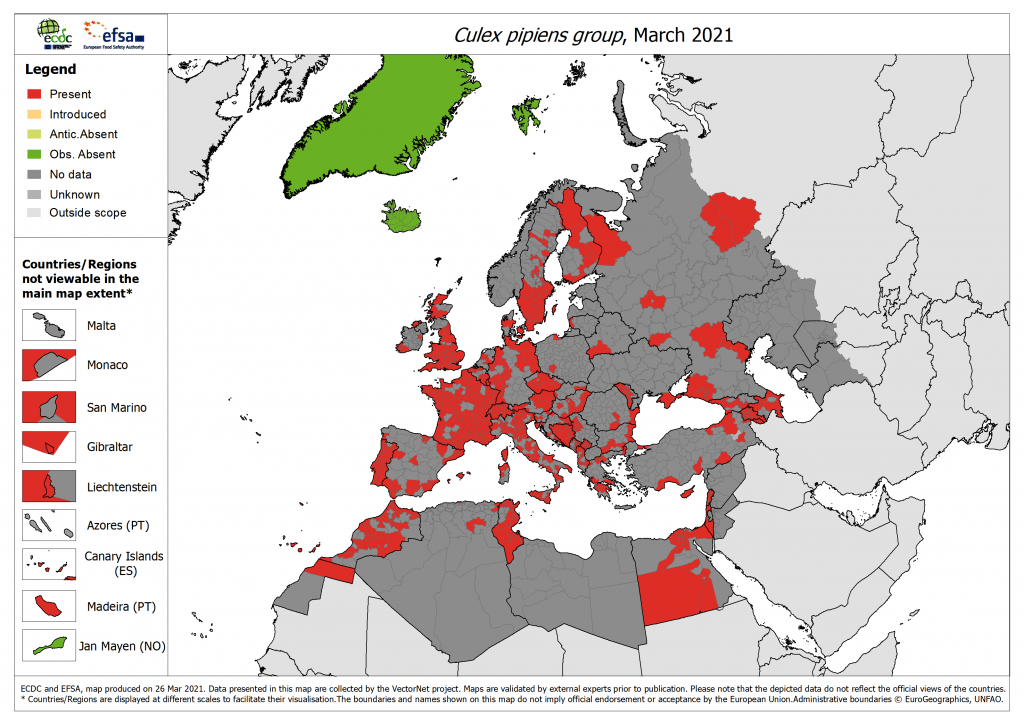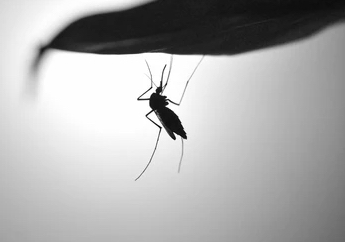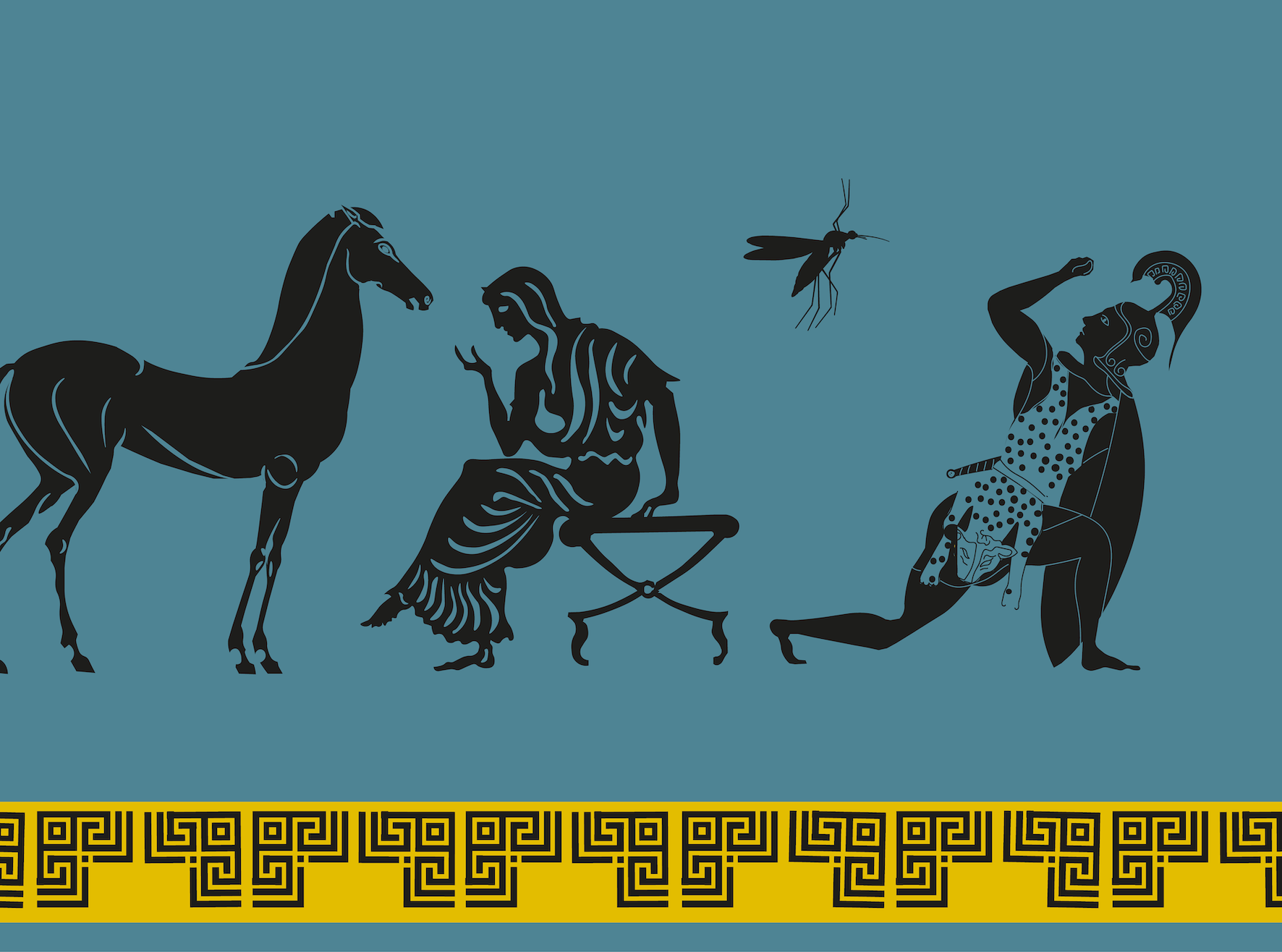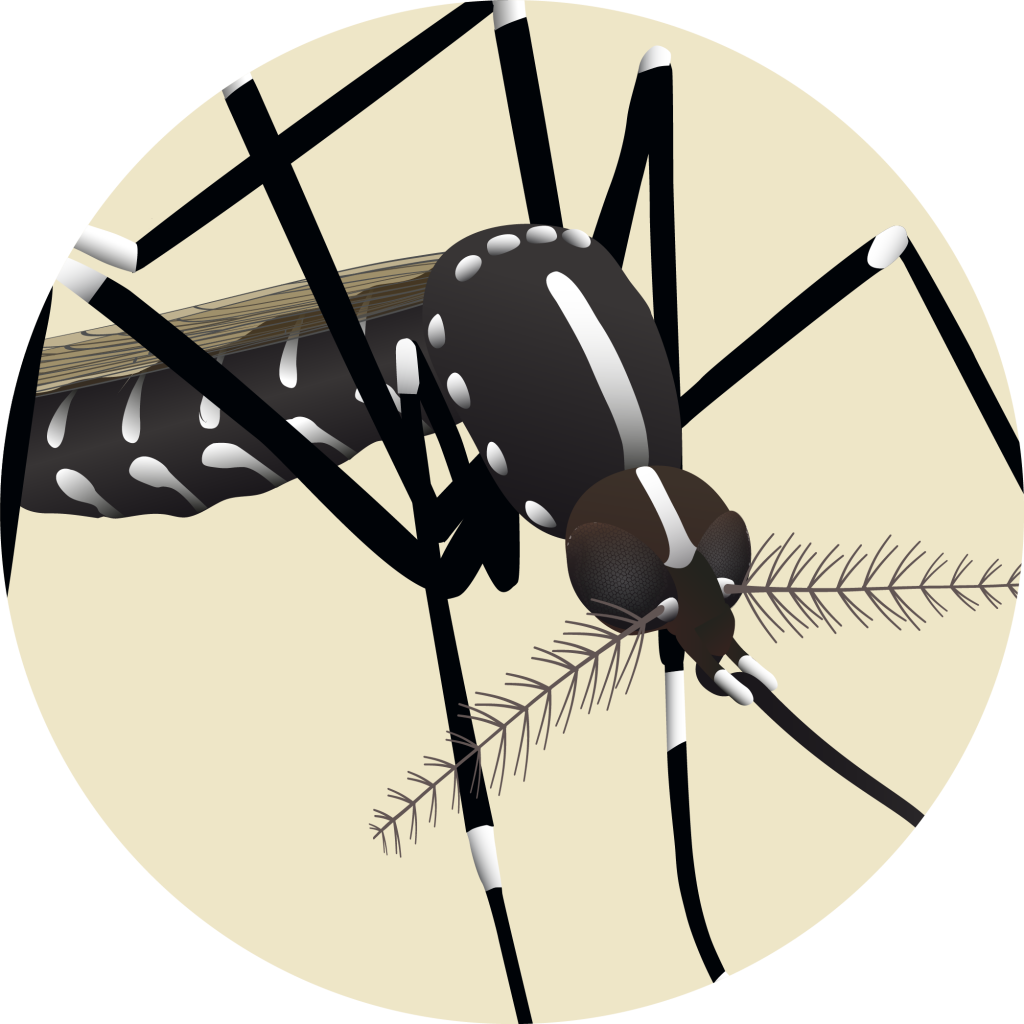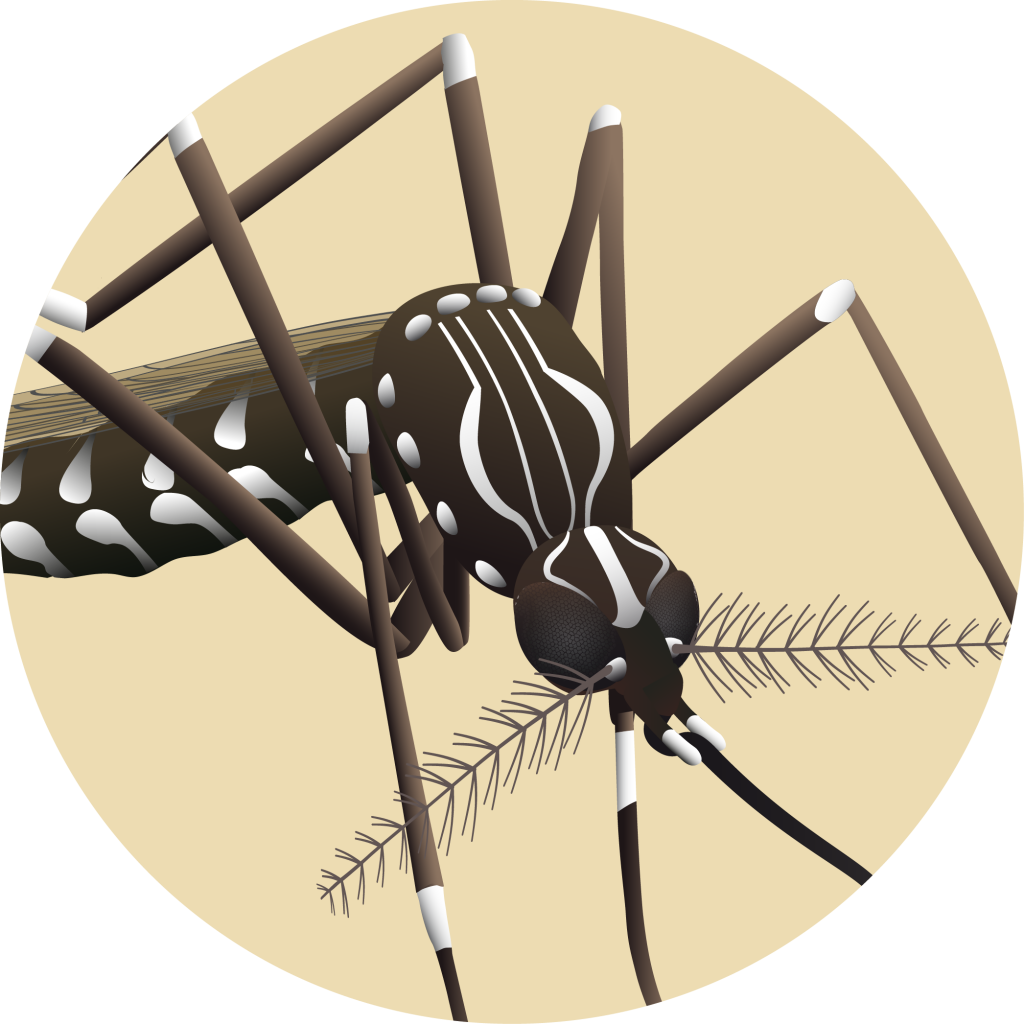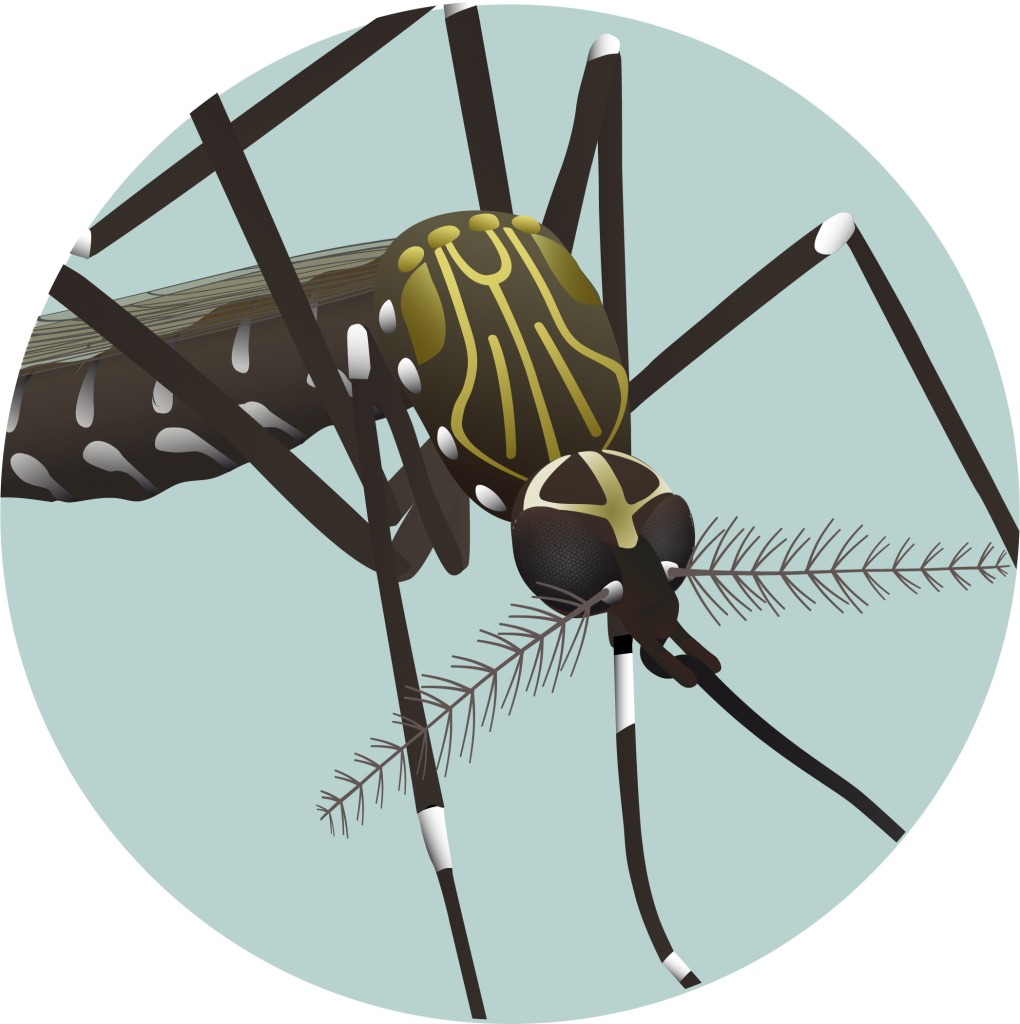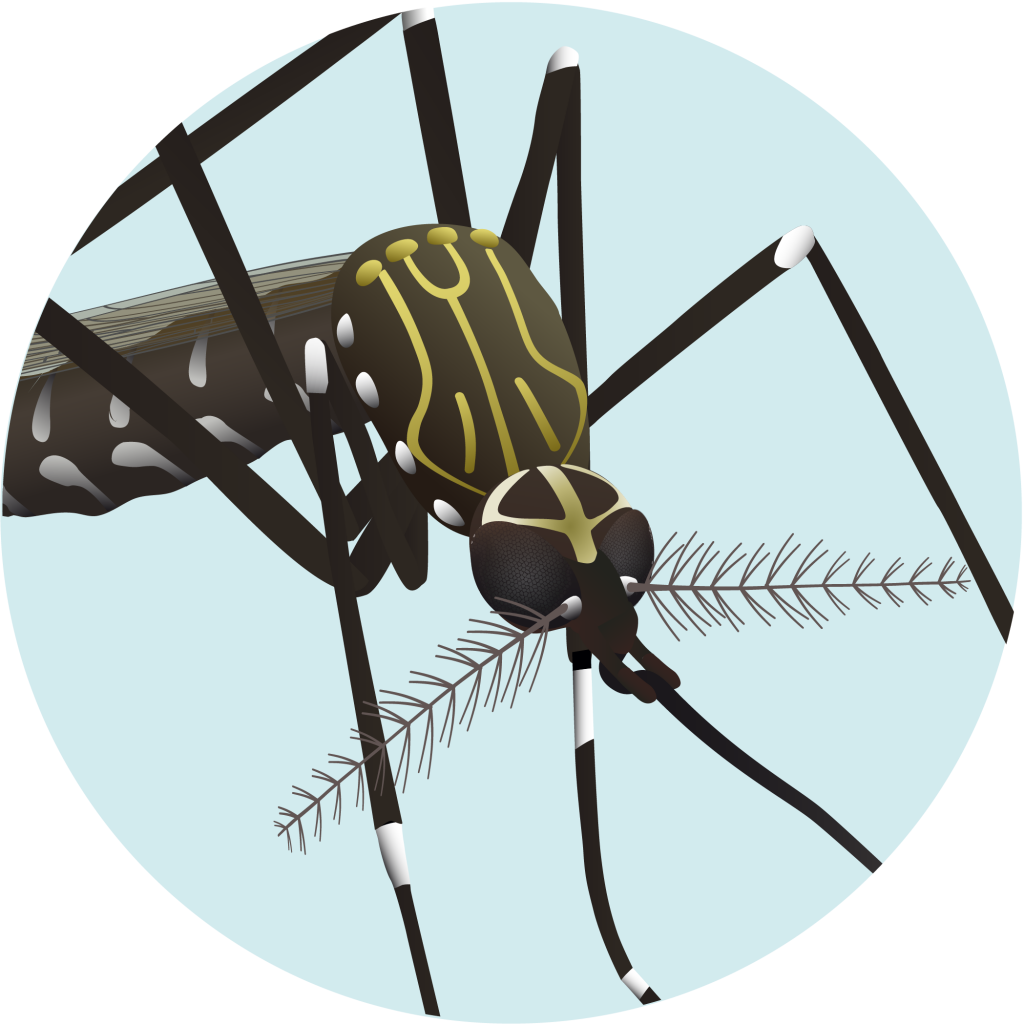Culex pipiens, Common house mosquito
Culex pipiens is cosmopolitan species and has a great capacity to occupy different environments. The common mosquito is one of the most widely distributed species on the planet, including morphologically very close sister species, such as Culex quinquefasciatus or Culex torrentium.
It has sometimes been considered that there are two forms of the common mosquito, the pipiens form and the molestus form. Morphologically they would be the same, but with a different behavior, physiology and genetics. The molestus form is capable of inhabiting and perform it complex cycle in confined spaces, and can develop its eggs without the need to bite and obtain blood. The pipiens form lives in open spaces and requires blood protein for the development of eggs.
According to this, the molestus form has managed to occupy underground spaces in large cities, such as sewers, while the pipiens form inhabits the surface and would be rather rural. However, there is no agreement on this controversy since there are many intermediate populations and in the complex there is enormous genetic variability.
Culex pipiens is typically a mosquito linked to organic contamination, especially in scuppers and sewers with stagnant black water. Their larvae resist high organic loads and take advantage of the fact that predators cannot follow them there, since there is no dissolved oxygen in the water. Remember that mosquito larvae breathe oxygen from the atmosphere.
What does the common house mosquito look like?
It is a light brown or straw yellow mosquito, without great striking characteristics. In each segment of the abdomen it has a lighter beige line. Its size ranges from 4-10 mm. The thorax does not present any type of design that makes it recognizable (1). Its legs are dark and uniform (2), without the white stripes that some Aedes have, such as the tiger mosquito.
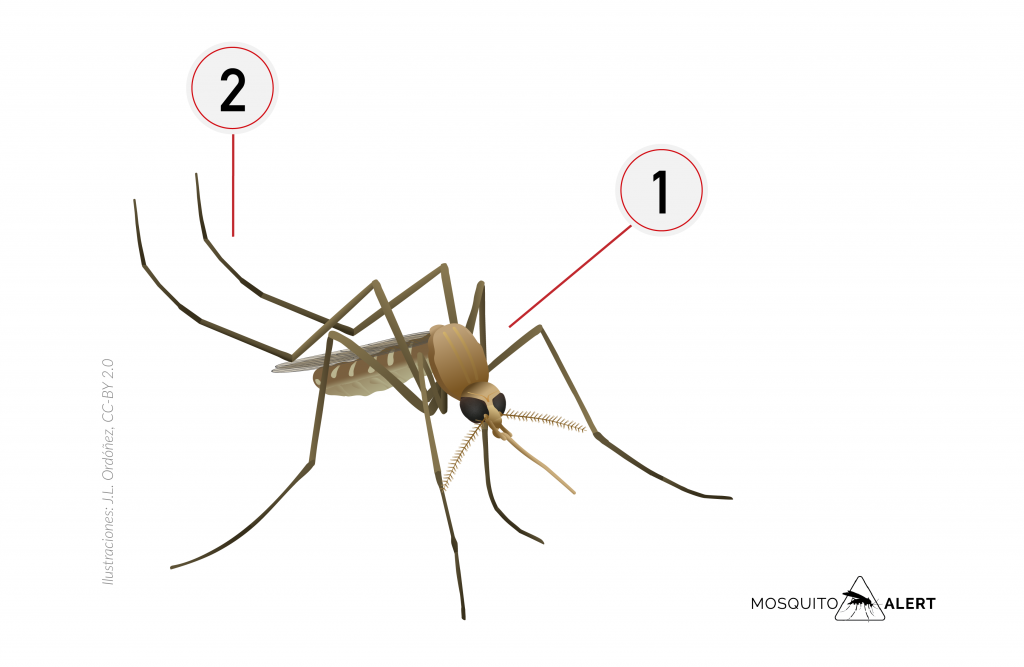
It is a nocturnal species that is oriented well in the dark, because it locates its guests by sight but thanks to its breathing and sweat. It is preferably active inside buildings and the combination of both behaviors results that it is the mosquito that in our rooms usually wakes us up at night with its hum when it comes to bite us.
The females lay their eggs on the surface of the water and glued together forming groups of 50 or 200. Being a kind of maximum opportunism, it can take advantage of all kinds of places that accumulate water, both clean and, preferably, contaminated; from water tanks, rain puddles, tires, ponds, untreated pools, as well as in scuppers and sewers.
Common house mosquito biting habits
Only the females bite and during the night. The species uses its chemical senses and heat detection to orient itself in the dark towards the person-to-animal they will feed on.
It is the typical species that we find at night in the bedrooms and buzzes in the dark. It is not as aggressive as the Aedes usually are but it is annoying by the sound, in addition to the bites that we discovered the next day.
The common mosquito not only bites people but also a wide variety of mammals and birds. This makes the species a bridge transmitter of disease between animals and people, especially the West Nile virus, which is an excellent vector, along with other Culex species.
Period of activity
The activity period of the common mosquito can start in April and can last until November in our temperate latitudes. Unlike Aedes, the common mosquito does not overcome winter in the form of resistance eggs, but when temperatures drop, females seek refuge in dark, cool and humid spaces, finding it in a large number of human structures, from garages and warehouses to wells and sewers, as well as natural spaces such as caves.
Diseases transmitted by the common house mosquito
The main health concern in Europe of the common mosquito is its ability to transmit the West Nile virus. A virus that usually circulates among birds and occasionally jump people and horses through the mosquito bite.
The common mosquito has also been shown to be able to transmit the Japanese encephalitis virus, as well as heartworms mainly to dogs.
As with all other mosquitoes, it is important to distinguish between capabilities that have been experimentally tested in a laboratory and what can actually happen or have been proven to happen under natural conditions.
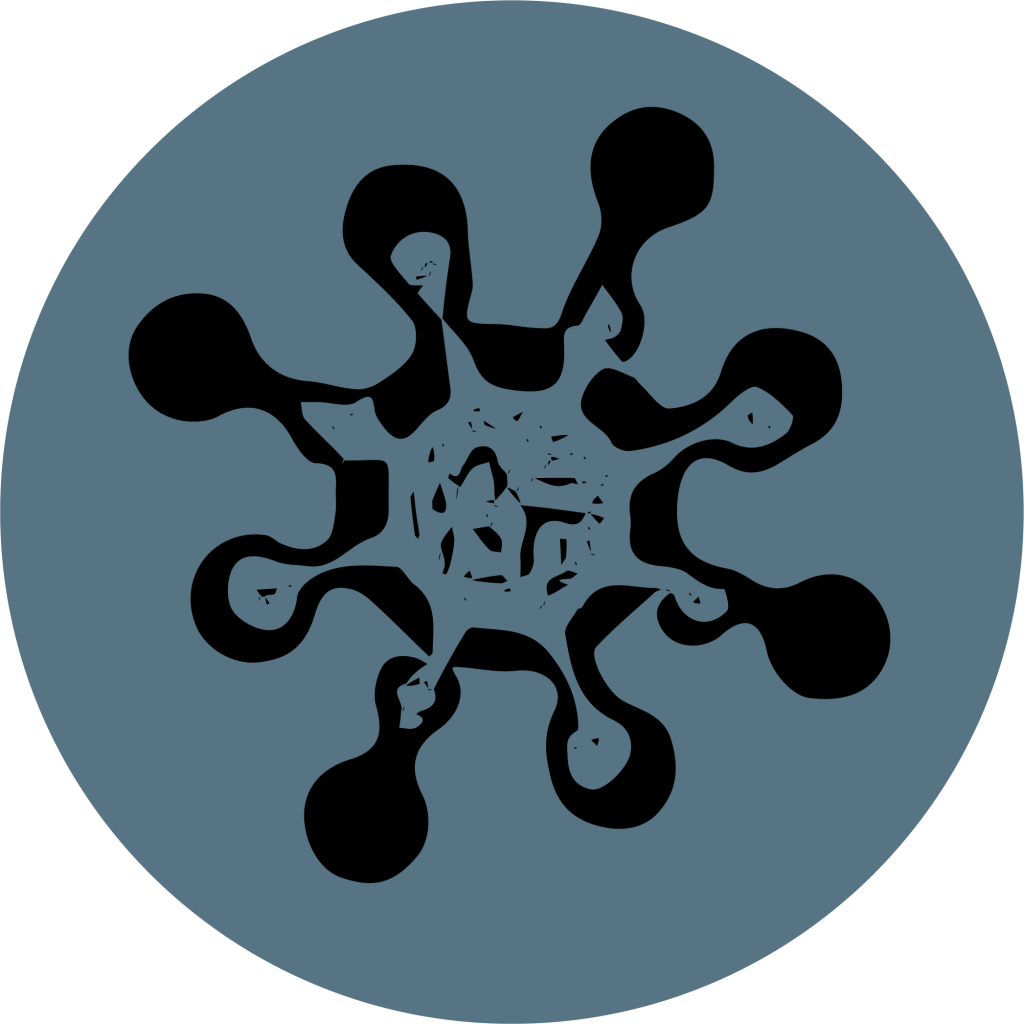
West Nile Fever

Dirofilariasis

